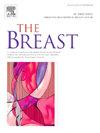BEBT-209, a primary CDK4 selective inhibitor, for the treatment of HR+/HER2- advanced breast cancer (BECTOP1): a phase 1, multicentre, open-label study
IF 7.9
2区 医学
Q1 OBSTETRICS & GYNECOLOGY
引用次数: 0
Abstract
Purpose
Several cyclin-dependent kinase 4/6 (CDK4/6) inhibitors have been approved for the treatment of hormone receptor-positive (HR+) and human epidermal growth factor receptor 2-negative (HER2-) advanced breast cancer. Despite the side effects that affect patients' quality of life, most patients still opt for CDK4/6 inhibitors due to their significant benefits. However, to further enhance treatment efficacy and safety, new approaches are still needed.
Patients and methods
This multicentre, open-label, Phase 1 trial enrolled Chinese patients with HR+, HER2-advanced breast cancers. The primary endpoints were dose-limiting toxicity (DLT), maximum tolerated dose (MTD). Secondary endpoints included the objective response rate (ORR), clinical benefit rate (CBR), progression-free survival (PFS), and pharmacokinetic parameters.
Results
During the dose-escalation phase, a DLT was observed in the 150 mg bid dose cohort, specifically, 2 patients experienced grade 4 neutropenia. MTD of BEBT-209 was 100 mg bid, and the most common adverse event (AE) was neutropenia. In Phase 1b, the median PFS of patients with BEBT-209 alone, BEBT-209 plus letrozole, and BEBT-209 plus fulvestrant was 10.38 months, 24.94 months, and not reached, respectively. At doses of 25 mg qd–150 mg bid, steady state areas under the concentration–time curve and peak concentration increased proportionally with dose. The most common grade 3 or 4 AEs were neutropenia (65.4 %), lymphocytopenia (7.4 %), and anaemia (4.9 %).
Conclusion
BEBT-209 was a primary CDK4 selective inhibitor and showed an acceptable safety profile and dose-dependent plasma exposure. The results highlight the potential of combination treatments as compelling options, particularly in combination with fulvestrant.
BEBT-209,一种原发性CDK4选择性抑制剂,用于治疗HR+/HER2-晚期乳腺癌(BECTOP1):一项多中心、开放标签的1期研究
几种细胞周期蛋白依赖性激酶4/6 (CDK4/6)抑制剂已被批准用于激素受体阳性(HR+)和人表皮生长因子受体2阴性(HER2-)晚期乳腺癌的治疗。尽管副作用会影响患者的生活质量,但大多数患者仍然选择CDK4/6抑制剂,因为它们具有显著的益处。然而,为了进一步提高治疗的有效性和安全性,仍然需要新的方法。患者和方法:这项多中心、开放标签的1期临床试验招募了中国的HR+、her2晚期乳腺癌患者。主要终点是剂量限制性毒性(DLT),最大耐受剂量(MTD)。次要终点包括客观缓解率(ORR)、临床获益率(CBR)、无进展生存期(PFS)和药代动力学参数。结果在剂量递增阶段,在150mg bid剂量组中观察到DLT,特别是2例患者出现4级中性粒细胞减少症。BEBT-209的MTD为100mg / bid,最常见的不良事件(AE)为中性粒细胞减少。在1b期,单独使用BEBT-209、BEBT-209联合来曲唑和BEBT-209联合氟维司汀的患者的中位PFS分别为10.38个月、24.94个月和未达到。剂量为25mg / d - 150mg / bid时,浓度-时间曲线下的稳态面积和峰值浓度随剂量成比例增加。最常见的3级或4级ae是中性粒细胞减少症(65.4%)、淋巴细胞减少症(7.4%)和贫血(4.9%)。结论bebt -209是一种原发性CDK4选择性抑制剂,具有良好的安全性和剂量依赖性。结果强调了联合治疗的潜力,特别是与氟维司汀联合治疗。
本文章由计算机程序翻译,如有差异,请以英文原文为准。
求助全文
约1分钟内获得全文
求助全文
来源期刊

Breast
医学-妇产科学
CiteScore
8.70
自引率
2.60%
发文量
165
审稿时长
59 days
期刊介绍:
The Breast is an international, multidisciplinary journal for researchers and clinicians, which focuses on translational and clinical research for the advancement of breast cancer prevention, diagnosis and treatment of all stages.
 求助内容:
求助内容: 应助结果提醒方式:
应助结果提醒方式:


